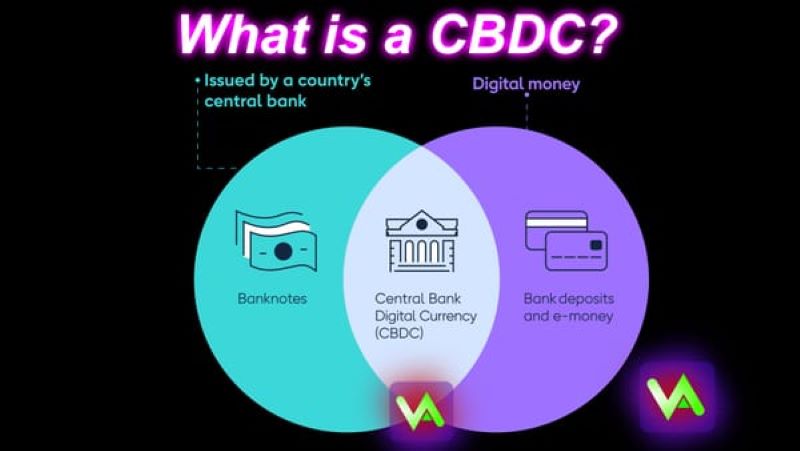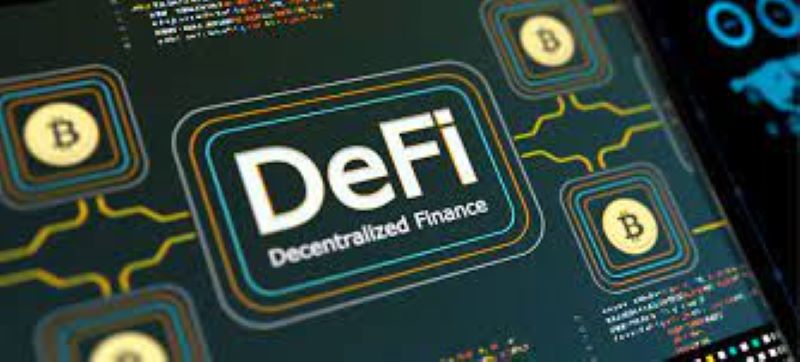Stablecoins Demystified: Your Ultimate Guide to Digital Currency Stability
In a sea of volatile cryptocurrencies, you must wonder, what are stablecoins? They’re your anchor in the digital storm. Let’s dive into why they matter. Imagine money that ducks the wild ups and downs of Bitcoin. Unlike their rollercoaster cousins, stablecoins keep their cool, hugging tightly to real-world values. You get the perks of quick, digital cash without the usual nail-biting. This guide isn’t just a peek behind the curtain; it’s the map to finding calm in the crypto chaos. With a clear-eyed look at their pros and cons, you’ll learn how they mesh with today’s rules and tomorrow’s money moves. Get ready, because we’re breaking down the mystery and setting the stage for your stablecoin savvy.
Understanding the Fundamentals of Stablecoins
The Different Types of Stablecoins
What are these “stablecoins” you keep hearing about? Simply put, they are digital money that stays at the same value. Think about how a seesaw needs weight on both sides to stay level. Stablecoins use different things to keep their price from moving too much. The goal is for you to use them without worrying about sudden drops or spikes in value.
Let’s talk about the main types of stablecoins. There are three big ones you should know. First, we have fiat-collateralized stablecoins. These are backed by real-world money. This means for every digital coin, there’s actual cash, like dollars, saved somewhere safe. It’s like having a piggy bank for every coin out there. Tether (USDT) is a famous one. It’s tied to the value of the US dollar.
Next up, crypto-collateralized stablecoins. These guys are backed by other crypto. Here’s the cool part: They use smart computer programs to keep the price steady. If the value of the backing crypto drops, the system reacts to balance things out.
Then there’s a different breed called non-collateralized stablecoins. They’re not backed by cash or crypto. Instead, they use a special kind of program to control the number of coins out there. This helps them keep a steady price. It’s all about supply and demand. If the coin’s value dips below a dollar, the program reduces the number of coins to lift the price back up.
“Wait, isn’t this risky?” you wonder. Well, each type of stablecoin has its own risks. We’ll get into that in the next sections. But they also offer big wins for folks who use them.
Mechanisms Ensuring Cryptocurrency Stability
So, how do these stablecoins stay put while everything else in crypto seems like a wild rollercoaster ride? The secret lies in these cool tricks called cryptocurrency stability mechanisms. Each stablecoin type has its own way of doing things. Fiat-collateralized stablecoins keep a stash of real money, like having a big safe full of dollars. This safe is often checked by outside experts to make sure all the cash that’s supposed to be there is really there.
Crypto-collateralized ones are craftier. They use piles of other cryptocurrencies and math magic to keep things stable. If the crypto backing goes down in value, some coins get sold off to balance the books.
And those unique non-collateralized ones? They pull off a neat trick. Their computer programs play with supply like a DJ with volume. Dropping prices? Time to turn down the number of coins. The price going too high? They pump up the supply.
These methods are great for keeping your digital dollars from bouncing around. But the journey to adopting these stable guys is just starting. They’re becoming a big deal in the world of finance, fitting into new spots like decentralized finance (DeFi) and maybe one day, even as a digital dollar.
The ride’s just getting started, and who knows how far these stablecoins will go! But one thing’s for sure: they’re making money more stable and digital every step of the way.
Examining the Pros and Cons of Stablecoins
Advantages of Using Stablecoins in the Market
Let’s kick things off with what makes stablecoins stand out. They bring peace to the often wild world of crypto. With stablecoins, you get less worry about sudden price drops. This is because they’re tied to stable things like dollars or gold. It’s like having a sailboat that doesn’t rock too much, even when the wind blows hard!
Say you are sending money to a friend far away. Using a stablecoin can be quick and cost less. It also avoids the rollercoaster of normal cryptocurrency values. For people and businesses, this means planning and payments are more predictable.
There are a few main types of stablecoins. Some are held steady by real-world cash, like dollars, and we call these fiat-collateralized stablecoins. Others, called crypto-collateralized stablecoins, use different cryptocurrencies as backup. Then there are non-collateralized stablecoins, which rely on algorithms to keep their value stable.
So why are stablecoins a big deal? They invite more people and companies to use crypto. This is because they build trust through price stability. They can also be a safe dock in the storm of crypto market fluctuations. Imagine being in a market that swings widely; stablecoins can be the calm spot in the chaos.
Risks and Concerns Associated with Stablecoins
But, as with all things, stablecoins have downsides too. There are some risks we have to face head-on. Certain stablecoins might say they’re backed by cash, but we can’t just take their word for it. Reserve audits are key to making sure the money backing them is really there. This is crucial for keeping trust in their value.
And yes, technology is cool, but it also means stablecoins depend on complex systems. If one piece fails, the stablecoin could too. Plus, since stablecoins are pretty new, rules around them keep changing. Staying in step with stablecoin regulations can be like playing catch with a rulebook that writes itself mid-game.
Now, the crypto world moves super fast, which means so do the stablecoins. They have to grow and stretch to match the needs of more people using them, which we call stablecoin scalability. And all while dodging the punches of things trying to knock their price around. We’re talking about stablecoin liquidity and making sure there’s enough money to go in and out smoothly.
So, there’s a balancing act here. Stablecoins hold a lot of promise for making digital bucks behave. But we have to keep sharp eyes on the risks that come with them. By understanding both sides, we can enjoy the pluses and protect ourselves from the minuses. And hey, isn’t that what smart sailing in the crypto seas is all about?
Regulatory Landscape and Compliance in the Stablecoin Space
Global Stablecoin Regulations and Their Impact
Laws around stablecoins keep changing. Many countries are working on it right now. Different types of stablecoins must follow these rules. This makes sure they’re safe to use. For fiat-collateralized stablecoins, these laws are very important. They are tied to real money, like dollars. Rules help keep the price stable. They also protect people who use them from losing money.
Crypto-collateralized stablecoins use other cryptocurrencies as backing. Because of that, they face different rules. These are more complex due to the crypto market’s ups and downs. Clear laws help manage those changes and keep stablecoins steady.
Non-collateralized stablecoins are trickier. They don’t have money or crypto backing them. To keep their value, they use smart math and algorithms. Regulators must understand technology to make good rules for them.
Laws aim for cryptocurrency stability mechanisms. This helps stablecoins keep their value. Even when other cryptos go up and down, stablecoins should stay the same.
USD-pegged cryptocurrencies are popular. They aim to always equal one US dollar. Because of this, they get a lot of focus in these laws. The rules keep them close to that one dollar mark.
Importance of Reserve Audits and Compliance Measures
Reserve audits are checks on stablecoins’ money reserves. Do they really have the dollars they say they have? These audits are a must. They show that the stablecoin can be trusted. This trust is key for stablecoin adoption in the market.
Reserve checks offer more than just trust. They also show that stablecoins follow the money rules of different countries. For price stability in digital currency, this following of rules, or compliance, is very crucial. It means stablecoins can be used in real life, not just for investment.
The use of reserve audits moves stablecoin market capitalization up. When people trust a stablecoin, more will use it. More usage equals a higher market cap.
When laws change, stablecoins must adapt. This could mean changes in how much backing they need. Or in how they report to those in charge. For stablecoin trading strategies, this means keeping an eye on the law. And always being ready to act when rules change.
For the market to welcome these digital coins, laws and audits show they are built on solid ground. They assure users their digital money is safe and will be worth the same tomorrow.
So, these laws and checks protect us all. From everyday users to big market players, they make sure we can trust stablecoins. And trust is golden in the world of digital money.
The Role of Stablecoins in Evolving Financial Ecosystems
Stablecoin Integration within Decentralized Finance (DeFi)
In the world of crypto, stablecoins keep prices stable. They are digital money, tied to safe assets like cash or gold. These coins can keep their value even if the crypto market goes up and down fast. Think of them like a bridge from the old money world to the new digital world.
Folks can use stablecoins to buy and sell things without big price jumps. This is super handy in DeFi, where people borrow, lend, and trade without banks. DeFi is like a big playground for money, and stablecoins are the swings that everyone counts on to not break.
There are a few main types of stablecoins. First, ones backed by dollars or other money (fiat). They’re the most common, like Tether (USDT). These keep their value ’cause you can trade them for real money. Then, there are coins backed by other crypto. They use fancy math to keep prices stable. Lastly, some stablecoins don’t have backing but use rules in their code to keep their value.
Using stablecoins in DeFi is big news. They let more people hop into the world of DeFi safely. You can earn interest on your stablecoins or use them for daily stuff, like buying coffee. This way, folks feel cool about using crypto without worry.
Future of Stablecoins: CBDCs and Digital Dollars
When we peek into the future, we see central bank digital currency (CBDC). This is like digital dollars made by big banks. They are thinking of making their own stablecoins. Imagine every dollar or euro you use is a coin on your phone that’s always the same value. You could pay for anything anywhere in the world super quick.
CBDCs could change everything. With them, the money in your digital pocket is the same as the money in a bank. They’re official, often backed by the promises of a country. So you can trust them as much as you trust the money in your wallet now.
People are already talking about the digital dollar. It would be like a CBDC from the USA. This could let the USA keep a strong money system even when everything goes digital. With all these changes, making sure these coins play by the rules is super important. That’s what folks like me help with – keeping things on the up and up.
Makers of stablecoins have to check that everything’s fine and follow the rules. This way, folks trust their coins. It’s hard to keep up, but it’s worth it. With careful steps, the money of tomorrow could be safe for everyone.
All in all, stablecoins are a key part of money’s future. They’re growing fast and could soon be part of daily life all over the globe. Whether it’s buying a snack or saving for the future, stablecoins make the cash of tomorrow work for folks today.
In this post, we’ve learned a lot about stablecoins. We’ve looked at their types and how they stay stable. We’ve weighed their good and bad points, too. Stablecoins can be safe and speedy for paying and saving. Yet, they have risks that we need to watch out for. We also checked out rules and must-do steps to make sure stablecoins play fair. This means keeping a close eye on where the money really is.
We saw how stablecoins fit into the new world of digital money. They help DeFi systems work and might be a sneak peek at money’s future, like digital dollars.
Here’s what to take away: Stablecoins are a big deal in the money world. They come with perks, but you’ve got to be sharp about the risks. And the rules around them are still growing. If we keep up with these changes, stablecoins could make our money stuff easier and faster. Stay smart, stay safe, and let’s keep an eye on where stablecoins go next!
Q&A :
What exactly are stablecoins in the cryptocurrency market?
Stablecoins are a type of cryptocurrency designed to offer price stability, as they are typically pegged to a stable asset such as fiat currency (e.g., US dollar), commodities (e.g., gold), or other cryptocurrencies. This pegging mechanism aims to reduce the volatility often associated with cryptocurrencies like Bitcoin and Ethereum, making stablecoins a more reliable option for transactions, savings, and as a buffer against market fluctuations.
How do stablecoins maintain their value?
Stablecoins maintain their value through various mechanisms, depending on the type of stablecoin. Fiat-collateralized stablecoins are backed by reserves of a specific currency at a 1:1 ratio, held by a central issuer or financial institution. There are also crypto-collateralized stablecoins that use other cryptocurrencies as collateral but are over-collateralized to absorb price fluctuations. Lastly, algorithmic stablecoins aim to maintain their peg through algorithms that control the supply of the stablecoin, similar to how a central bank might manage a fiat currency.
What are the most common uses of stablecoins?
Stablecoins are commonly used for daily transactions and payments, given their stability compared to other cryptocurrencies. They’re also used to transfer money cross-border quickly and with minimal fees, to earn interest in various decentralized finance (DeFi) platforms, and as a safe haven to protect against crypto market volatility. Traders frequently use stablecoins as a means to move funds between cryptocurrency exchanges without converting back to fiat currency.
Are stablecoins safe to invest in?
While stablecoins are generally considered to be safer than non-stable cryptocurrencies due to their relative price stability, they are not entirely risk-free. The safety of a stablecoin investment depends on the credibility of its backing assets, the management of the issuing company, and the regulatory environment. It’s important for investors to research specific stablecoins and consider these factors before investing. Additionally, even if a stablecoin is deemed secure, it is not typically an investment for growth but rather for preservation of capital in the crypto space.
Can stablecoins experience volatility?
Despite their name and purpose, stablecoins can sometimes experience volatility. This can occur if the market loses confidence in the stablecoin’s ability to maintain its peg, particularly for those that rely on algorithmic mechanisms or if there is a significant issue with the collateral. In extreme cases, such as regulatory actions against the issuers or technical problems with the stablecoin’s protocol, stablecoins can de-peg from their underlying asset, resulting in volatility. However, well-managed fiat-collateralized stablecoins have historically shown a high degree of price stability.




